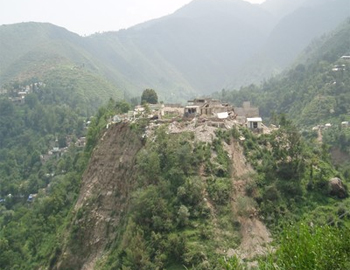
Harnessing Forests for Nature-Based Solutions to Disaster Risk Management
Challenge
In the last two decades the impacts of natural disasters have been devastating, affecting over 4 billion people and killing more than 1 million, while causing around $2 trillion in economic losses. Natural disasters promote inequity and affect the poor and vulnerable the most.
Disaster risk management focuses on the fact that by taking action to reduce vulnerability and strengthen resilience, countries can protect lives and assets from known risks. At the same time, countries can also control the creation of new risks by implementing the right policies and interventions. In this context, there is growing demand for nature-based solutions to better manage exposure to natural hazards and climate change while supporting efforts to build resilience in a sustainable manner in vulnerable developing countries. Forest play a crucial role in this, not only in mitigating risks but also in providing other benefits for communities in terms of income and resilience. The new Sendai Framework for Disaster Risk Reduction (2015–2030) underlines ecosystem-based solutions for reducing disaster risk. The Sustainable Development Goals also highlight the importance of ecosystems services as an effective disaster risk tool.
To that end, the main objectives of the DRM and forestry program are to promote the use of forest-related ecosystem-based approaches in DRM in order to increase resilience of vulnerable communities while also harvesting social and economic benefits, to enhance the protection of forest areas by mainstreaming DRM approaches in wildfire protection and forest management, and to promote the use of forest cover information in identifying hazard- and risk-prone areas.
Approach
The PROFOR-DRM and forestry window will be structured under three pillars:
- Risk identification and risk assessment—to identify or develop methodologies and tools for quick identification in areas prone to natural hazards, in particular landslides and floods, based on the use of land cover information (e.g., coverage type and deforestation).
- Risk reduction via ecosystem-based approaches and reforestation—to increase the resilience of vulnerable communities by reducing the risk to disaster that they are exposed to while also harvesting social and economic benefits.
- Preparedness and forest protection—to reduce the impact of wildfires on forests and those communities whose livelihoods depend on those forests by promoting the use of risk-informed fire management.
To produce practical guidelines and case studies, this program will adopt a hands-on approach. In addition to harvesting lessons from the Bank and other projects, it will also learn from the technical assistance for projects such as mangroves coastal protection in Jamaica and managing the risks of forest fires in Indonesia and Serbia. It will also use the guidance on coastal and marine ecosystem accounting developed by WAVES.
Results
This activity has been completed. As a result of this activity, new ASAs were started in Madagascar, Mozambique, Panama, and Sri Lanka, and several WB teams have considered or incorporated NBS in their approach. In Madagascar, a GCF proposal is being developed that would apply nature-based solutions in an urban setting following the guidelines produced under this activity.
Key outputs inlude:
1) An internal knowledge platform under the DRM Solution Groups (accessible by typing “NBS” [nature-based solution] in the browser);
2) An external web platform that includes dozens of NBI projects from around the world (www.naturebasedsolutions.org);
3) A guidance note on nature-based flood protection;
4) A video on the program;
5) A blog on the program.
For stories and updates on related activities, follow us on twitter and facebook , or subscribe to our mailing list for regular updates.
Last Updated : 06-15-2024








